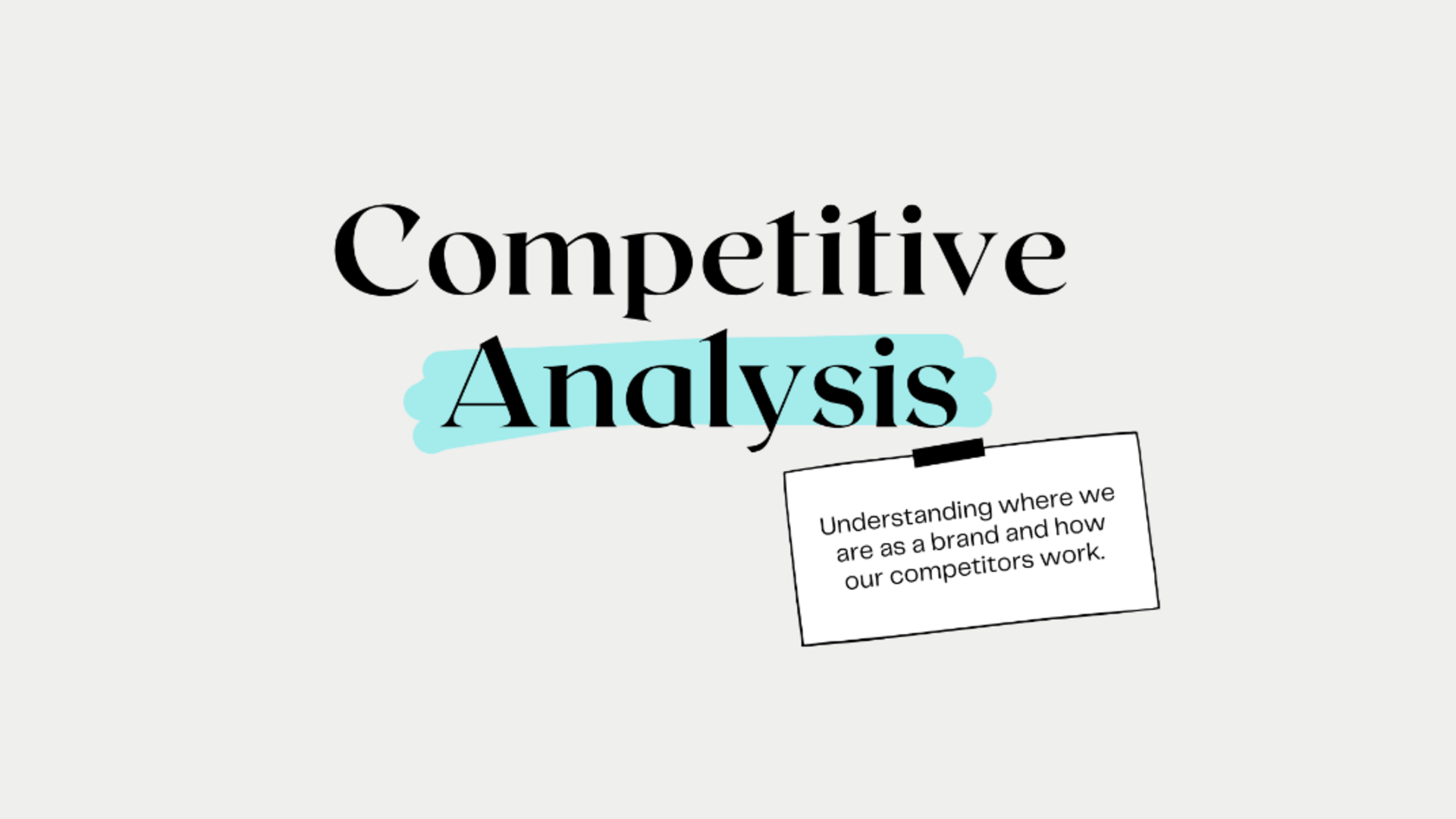Competitive analysis is a process of evaluating and analyzing the strengths, weaknesses, strategies, and market position of competitors, to identify opportunities for innovation, differentiation, and competitive advantage.
By conducting a competitive analysis, organizations gain insights into their competitors' products, services, strategies, and market positioning. This information helps them assess their relative strengths and weaknesses, identify gaps in the market, and uncover potential areas for innovation.
Step-by-Step Guide:
- Identify competitors
Determine who your direct and indirect competitors are in your market. This includes those offering similar products or services and potential substitutes.
- Analyze competitor products/services
Examine the features, quality, pricing, and unique selling points (USPs) of competitors’ offerings. Identify what differentiates their products from yours.
- Evaluate market positioning
Study how competitors position themselves in the market. Look at their branding, target audience, and marketing strategies.
- Review competitors’ strengths and weaknesses
Identify areas where competitors excel (e.g., customer service, innovation) and where they have weaknesses (e.g., slow delivery, higher prices).
- Assess competitors’ financial health
Review financial performance metrics like revenue, profit margins, and growth trends, if available. This helps gauge their market power and sustainability.
- Examine marketing and sales tactics
Analyze competitors' advertising, promotions, distribution channels, and customer acquisition strategies. This can provide insights into their customer engagement approach.
- Monitor online presence and reputation
Look at competitors’ websites, social media, and customer reviews to gauge their public perception and online influence.
- Identify trends and innovations
Pay attention to any innovations or emerging trends competitors are adopting that may impact your market.
- Benchmark your performance
Compare your own business to competitors in key areas (e.g., pricing, quality, customer satisfaction) to understand your relative position in the market.
- Develop actionable insights
Use the analysis to identify opportunities and threats, adjust strategies, and refine your competitive advantage.
Example:
Apple continuously performs in-depth competition analysis to maintain its leadership in the tech industry, particularly in the smartphone and personal electronics markets.
Implementation:
- Identifying competitors: Apple consistently monitors key competitors like Samsung, Google, and Huawei, among others, in the smartphone and electronics industry.
- Analyzing products: Apple rigorously analyzes competitors’ products for features, design, pricing, and customer preferences. This allows Apple to refine its own offerings, such as enhancing iPhone features to compete with Samsung’s innovations or Google's Android updates.
- Market positioning: Apple focuses on premium branding and an ecosystem that differentiates it from competitors, positioning itself as a brand associated with innovation, simplicity, and high-quality design.
- Strengths and weaknesses: Apple keeps track of where competitors excel (e.g., Samsung's display technology) and where they fall short (e.g., fragmented software ecosystems in Android devices), using this insight to enhance its product ecosystem and maintain customer loyalty.
- Financial assessment: Apple closely watches competitors' financial health, enabling them to anticipate market shifts and adjust pricing strategies or product launches to capitalize on market opportunities.
- Marketing and sales tactics: Apple excels at analyzing and adopting new marketing approaches, often setting trends in product launches, advertising campaigns, and retail experiences.
- Trends and innovation: Apple is highly sensitive to emerging trends, such as foldable phones or augmented reality, and analyzes competitors' experiments in these areas to decide when and how to enter new technology segments.
Results:
Apple’s comprehensive competitive analysis enables it to stay ahead of rivals by continually innovating, refining its brand positioning, and maintaining a loyal customer base. This analysis has contributed to Apple’s sustained dominance in the tech market and its ability to launch products that meet consumer demands ahead of competitors.

If you want to learn more about competitive analysis, you can refer to the following sources. They provide detailed insights and modern approaches to understanding competition and market dynamics.
Behera, B. K., Prasad, R., & Behera, S. (2020). Competitive Strategies in Life Sciences. Springer Singapore. https://doi.org/10.1007/978-981-15-7590-7

#Competition #Substition&Alternatives #Positioning/Branding #Features, benefits, value #Revenue Model #Willingness to pay





